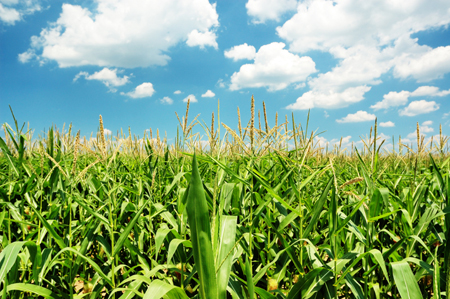 (Bloomberg) – The world is awash in grain, prompting the most bearish outlook ever by speculators.
(Bloomberg) – The world is awash in grain, prompting the most bearish outlook ever by speculators.
U.S. corn stockpiles at the start of last month were the biggest in 28 years, adding to signs of a glut that’s driven global food costs to the lowest since 2010. Hedge funds have been net-short on agriculture from cotton to wheat for three weeks, the longest since the government data started in 2006.
American farmers reaped record corn harvests for two straight seasons, filling stores and sending prices tumbling more than 20 percent in the past year. Global soybean production reached an all-time high, and the U.S. government expects domestic growers will plant the most acres ever this spring. Inventories of wheat and sugar also surged.
“The real negative remains supply, and that’s the case with all the grains,” Paul Christopher, the St. Louis-based co-head of real-asset strategy for the Wells Fargo Investment Institute, which oversees $1.6 trillion, said in an April 2 phone interview. “The only real hope is for some global cuts in production. I wouldn’t be buying corn here.”
Combined positions across 11 agricultural products was a net-bearish holding of 94,714 contracts as of March 31, U.S. Commodity Futures Trading Commission data published three days later show.
Bear Markets
Expanding surpluses have left most raw materials mired in bear markets. The Bloomberg Commodity Index dropped 25 percent in the past year, and the Bloomberg Agriculture Index of eight farm products slumped 26 percent. The MSCI All-Country World Index of equities advanced 5.1 percent, while the Bloomberg Dollar Spot Index climbed 17 percent.
Corn prices dropped 4.3 percent in March, the second loss in three months. Futures traded at $3.89 a bushel as of 5:12 a.m. in Chicago. A glut of the grain, used in everything from animal feed to fuel, can help lower costs for meat producers including Tyson Foods Inc. and for makers of ethanol such as Archer-Daniels-Midland Co.
The U.S. Department of Agriculture said last week that domestic farmers will plant corn on 89.199 million acres. Analysts on average forecast 88.834 million. Soybean seedings will reach a record 84.635 million acres, the agency estimated. The U.S. is the world’s largest producer of both crops.
Weather Concerns
The government’s plantings estimate, based on a survey of farmers, was taken before most seeding started, and plans can change. Rains have delayed corn sowing in the southern regions. In Texas, 20 percent of the crop was in the ground as of March 29, down from an average of 43 percent in the prior five years, USDA data show.
Dry weather in the Great Plains is hampering winter-wheat crops. In Kansas, the largest domestic grower of the variety, 22 percent of the state was in severe drought as of March 31, U.S. Drought Monitor data show. That’s up from 18 percent three months ago. Futures in Chicago climbed 5.6 percent last week, the most since November.
“Weather is pretty multifaceted, and there are many wild cards to it,” Kurt Nelson, a partner at Stamford, Connecticut-based SummerHaven Investment Management, said on April 2 by phone. The company oversees about $1.4 billion. “This is the beginning of the more exciting period, the more interesting time for the grain cycle. It’s when you get more shocks, and they can be positive or negative to prices.”
Bigger Stockpiles
Even amid adverse weather, bigger stockpiles can help cushion any threats to production. American corn inventories reached 7.745 billion bushels as of March 1, the USDA said March 31. That’s 11 percent higher than a year earlier and the most for the date since 1987. Analysts on average predicted a gain of 8.6 percent. China’s reserves were revised up by 13 million tons from March to 95 million tons, the United Nations’ Food & Agriculture Organization estimated on April 2.
As supplies climb, some sources of demand are waning. On March 10, the USDA cut its outlook by 1 percent for this year’s corn use in ethanol, which is added to gasoline. A stronger dollar is making American grain shipments less appealing to foreign buyers, and export sales are trailing last year’s pace for corn and wheat, government data show.
“This is a well-supplied market not only in the U.S., but globally,” Aakash Doshi, a vice president at Citigroup Global Markets Inc. in New York, said by phone April 2. “We see a sluggish demand environment.”




